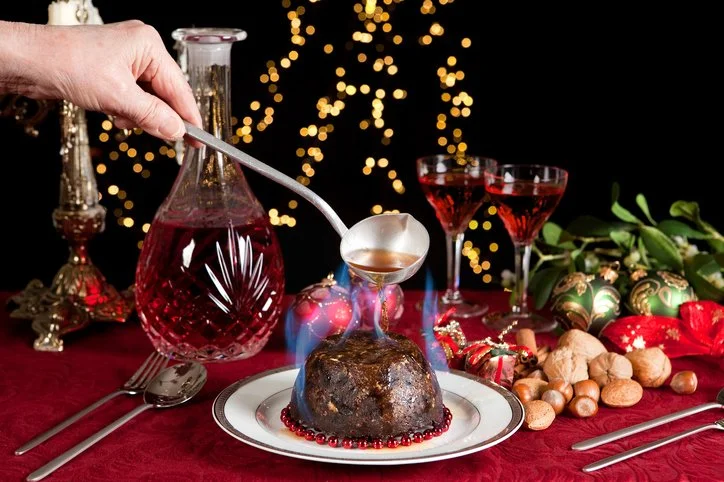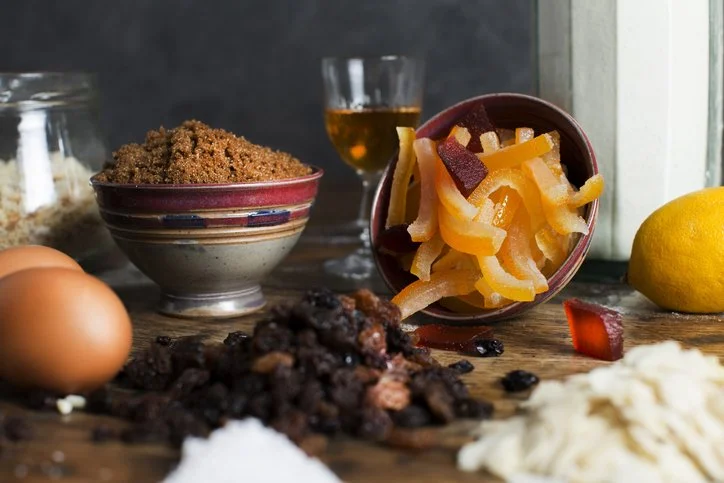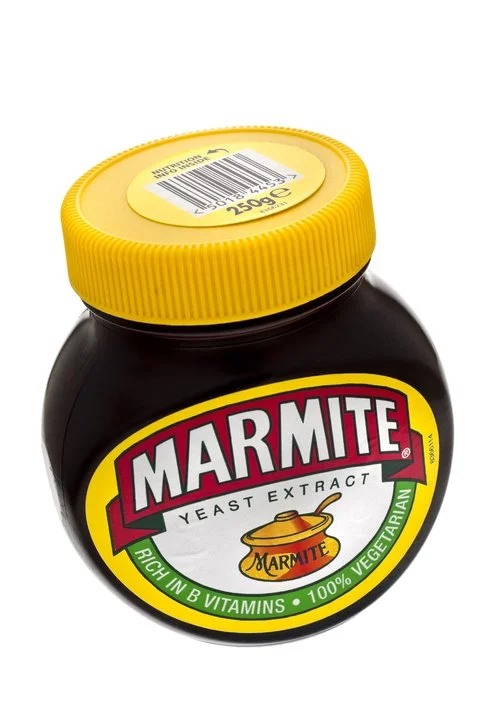The WSET Diploma and Christmas Fruitcakes
There was a wine tasting epiphany in my Advent-in-London calendar this year. When the wise men and women at WSET told us what flavors and aromas to look for in a great wine, what they were really saying was: What will remind us of Christmas dinner when we were growing up in England?
One of the calendar’s daily electronic gifts was a Christmas recipe book featuring nearly all the flavors in the WSET wine tasting lexicon that I, as an American, had rarely encountered. In the classic English holiday treats of mince pie, trifle, etc., were the things I had never eaten — currants (mostly illegal in the United States in my lifetime), sultanas, and candied orange peel — along with those usually avoided (prunes and figs) and many others in the tasting guide: lemon, apple, cherry, raisin, ginger, nuts and baking spices.
I wasn’t really sure what dates were when I signed up with WSET, but I would have been if I had grown up with sticky toffee pudding. But, over here in New World wine territory, I was eating things loaded with sugar and butter instead: chocolate cake, fudge and sugar cookies.
If I’m right that one of the reasons we like a particular wine is because it triggers happy tasting memories from long ago, it’s hardly surprising that American wines often seem sweet or buttery to British tasters.
Jancis Robinson’s UK-based website writes of one of America’s most popular wines: “proper, dulce-de-leche Cali Chardonnay” — a perfect pairing for a “Thanksgiving feast of honey roasted carrots, whipped butternut squash with brown sugar, creamed corn and turkey with cranberry jelly.” Well . . . exactly.
Over here, while our younger selves were drinking sugary Coca-Cola, the WSET Examiners were undoubtedly sipping black currant-based Ribena. Meanwhile, The Taste of Britain argues that gooseberries — another WSET mystery to me — should be celebrated equally with black currents. Where I live, they do just that: by statute, both are deemed a “public nuisance.”
One element of this transnational cultural anthropology of flavors/flavours continued to elude me. What could possibly explain the British fascination with really old Champagne? (Fascination seems fair when Jancis Robinson says “smells almost fishy,“ and “not as long as some,“ and still awards 18/20 points.) But a trip to the international aisle of my grocery store revealed all. Well-aged champagne clearly evokes many happy tasting memories of a nation raised on Marmite, a spread made entirely and inexplicably of yeast extract. (Note to Americans: if you are going to try Marmite, start with a really small bite.)
For WSET Diploma seekers from this side of the Atlantic, you might consider making room for a copy of the Downton Abbey Christmas Cookbook next to your tasting lexicon.
Don Drakeman, DipWSET




